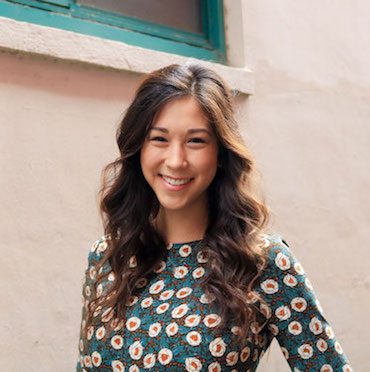Search powered by Funnelback
First, a note about the transition from millennials to Generation Z. They may be less Facebook-focused. They are definitely more mobile-obsessed. But they still love a good selfie.
The key for those in higher ed may be that one word: good. Now more than ever, your innovative, accessible and shareable content is critical. Gen Z curates their presence across a diverse network of media, from Snapchat to YouTube playlists and into the real world. If your team isn’t doing the same, you’re scarcely worth a second look.
At Funnelback, our higher ed team has assembled an easily-digestible ebook with ten ways to attract and engage Gen Z. We’ve shortened that to five for this blog. You can download the full ebook here.
Snapchat
When Gatorade’s Super Bowl filter received more impressions than actual people watching the game, marketers took note.
More than 80% of college and high school students use Snapchat, making it the most-used social media network among Gen Z (and number two among millennials). And of those users, more than 70% say they use Snapchat more than six times per day. It’s used, and used often.
SCG Advertising has found that Gen Z overwhelmingly loves day-in-the-life, behind-the-scenes, and how-to videos. They’re also fond of geofilters and related forms of interactive advertising. Are you making the cut?
Geofilters
Snapchat users are especially engaged with geofilters. At recruiting events and during campus open house, create a fun Snapchat geofilter to engage with attendees. These have proven popular among existing students as well as visitors and prospects, and cost as little as $5 each day to cover a 20,000 square foot area.
At Monmouth University, the basketball team’s over-the-top bech celebrations, featured on Snapchat, “not only led to coverage on ESPN, but also thousands of new fans” according to NBC. Fun geofilters with the university mascot added to the flood of new followers.

You can also leverage “Snapstreaks”. These represent the number of consecutive days two Snapchat users have engaged. Use your mascot to make your Snapchat filter highly engageable and worth snapping, giving Gen Z an excuse to share your content to keep their Snapstreak alive.
A sophisticated Snapchat campaign from mobile game Best Fiends is an against-the-grain model. With an existing social media base, their marketing team sought to create a unique presence on Snapchat. With hand-made props - a nod to Gen Z’s desire for authenticity and human engagement - the antiheroes of the game became the focus of a wildly successful behind-the-scenes Snapchat campaign.
Analysis and attribution are critical with any investment. As a relatively new and evolving solution, Snapchat geofilters provide analytics around views and uses but not significant data around what might be driving direct conversions. Ad analytics for Snapchat are improving rapidly, however, and you can expect to see results in your target demographics quickly - even if it’s not always as directly attributable as we’d like.
Influencer engagement
Don’t let your focus on social media disrupt two of the most traditionally effective means of reaching students: influencers and events.
Universities and college have teamed up with celebs from quarterbacks to Oscar-winning actors and members of Congress for years.
But Gen Z is less interested in celebrities than their predecessors.
Instead, they are fans of relatable YouTube personalities. Who else is better positioned to engage with Gen Z? Authenticity is built-in with teen influencers speaking to their cohort.
Our Gen Z research highlights several influencers (see more in our ebook), though there are hundreds more around the country:
- Vanessa Martinez (18) - Lifestyle
- Matthew Morris (13) - Music
- Hannah Alper (13) - Human rights
Gen Z doesn’t read email. They Snapchat all day. And they’re still very engaged in Facebook.
Facebook is a platform already used by 1.2 billion users. Thanks to a clever bit of insight and the purchase of Instagram, it’s deeply integrated into social platforms Gen Z prefers.
While Gen Z is deserting Facebook as a service, many know and love the stand-alone Facebook Messenger app, a private, highly customized messaging platform like Snapchat.
Many teens also prefer Messenger as a fast way to talk to people with different brands of phones - and, of course, love to add fun effects like digital stickers.
Melanie, 18, reported that "I don't have an iPhone and my regular text messaging is kind of slow, plus Messenger has a bunch of features like stickers, emojis, and Facebook games where you can challenge your friends in-message.”
Sponsored messages can only be sent to users who have messaged your page in the past. This makes a campaign around messaging especially effective, encouraging users to send you notes via Facebook Messenger. For example, a user can enter a giveaway by sending a message that says “I’m in.”
Prove ROI
Gen Z has been through a recession and a boom. Keenly aware of the value of the dollar, they demand a return on investment for all of their commitments.
Higher education is no exception.
If you can draw a link between their passions, potential careers after graduation, and courses at your institution, you’ve earned their approval.
Some colleges, like BMet, are targeting students with three separate searches: for a course of study, for geography, or for a career.
A job mapper on your site also allows Gen Z to draw a connection between a real graduate’s career, your institution and the prospect. By connecting the dots between school and career, students see the institution as a critical part of their progress. An individualized plan for skills and career development can also lend substance to this commitment.
Multiple channels
Generation Z is a multi-platform population. Far more than their predecessors, their information intake is not limited to one or two sources.
“With students using up to five different screens over the course of the day and evening, it should be of no surprise that they are not married to just one platform," notes Michael Cherenson, executive vice president for public relations at SCG Advertising.
"Marketers and brands must be agnostic when it comes to platform. This means being open to use of several social media networks, often in unique ways."
There is no longer a single source of truth for most students. Effective campaigns must reach them through television, Spotify, Facebook, Twitter, Snapchat, in person, or through friends or influencers. Students expect to use different apps to quickly get a date, order a pizza, book a cab, or watch the latest blockbuster. They have no interest or patience for single-medium ads.
“I hardly ever looked at the website - I spent most of my time on Facebook Groups speaking with people that were taking my course or living in the same halls as me,” commented one student at Bucks New University.
Fundamentally, Universities need provide experiences that mirror the way students behave in their day-to-day lives. In one instance, Funnelback was integrated into a course finder app that replicated popular online dating platform Tinder.
To learn more about the channels higher ed is using to reach Gen Z, download the full ebook here.
This blog was originally posted on Higher Ed Live on October 9, 2017.



